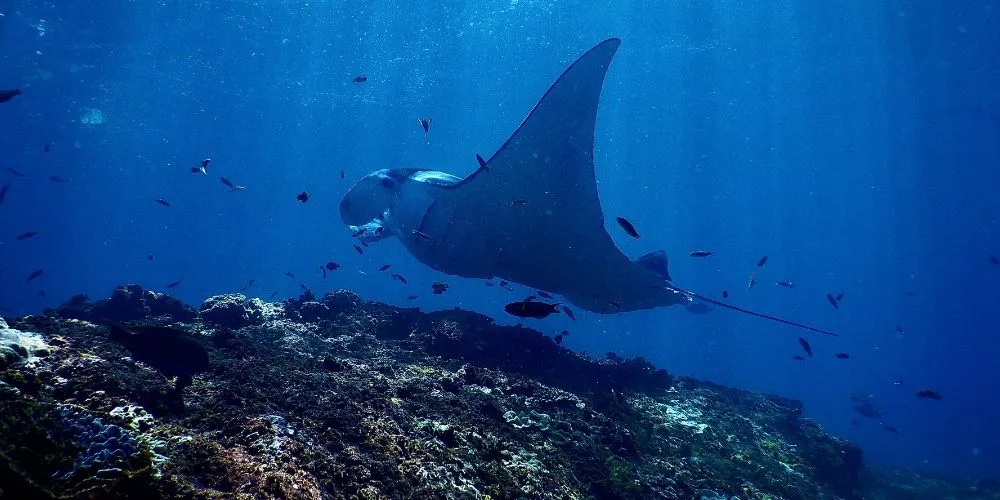Oceanography, the comprehensive study of the world’s oceans, is a multidisciplinary field encompassing the marine environment’s physical, chemical, biological, and geological aspects. This article delves into the expansive realm of oceanography, unveiling its significance, tracking the evolution of key technologies, examining diverse sub-disciplines, and envisioning the transformative possibilities it holds for understanding Earth’s last frontier.
The Significance of Oceanography
Oceanography is paramount as it unravels the mysteries of the vast and dynamic oceanic realm, which covers over 70% of the Earth’s surface. Understanding the oceans is crucial for deciphering climate patterns, marine ecosystems, geological processes, and the intricate interplay between the ocean and the atmosphere.
Climate Regulation and Ocean-Atmosphere Interactions
The oceans play a pivotal role in regulating Earth’s climate. It investigates ocean currents, heat distribution, and sea surface temperatures, contributing to our understanding of climate patterns. The ocean-atmosphere interactions, exemplified by phenomena like El Niño and La Niña, have far-reaching impacts on global weather systems.
Marine Biodiversity and Ecosystem Dynamics
It provides insights into the diversity of marine life and the complex dynamics of marine ecosystems. By studying oceanic habitats, nutrient cycles, and food webs, scientists can assess the health of marine ecosystems and understand the factors influencing the distribution and behavior of marine species.
Geological Processes and Seafloor Mapping
The study of oceanography extends beneath the waves to explore the geological processes shaping the seafloor. Seafloor mapping, a crucial aspect of oceanography, reveals the ocean basins’ topography, geology, and tectonic activity. Understanding these processes is essential for unraveling Earth’s geological history and predicting natural hazards such as earthquakes and tsunamis.
Evolution of Key Technologies in Oceanography
The journey of oceanography is intricately woven with the evolution of key technologies that have revolutionized our ability to explore and study the oceans.
Remote Sensing and Satellite Technology
Remote sensing and satellite technology have transformed our global capacity to observe and monitor the oceans. Satellites equipped with various sensors provide data on sea surface temperature, ocean color, and sea level, contributing to our understanding of ocean dynamics, climate patterns, and the distribution of marine life.
Autonomous Underwater Vehicles (AUVs) and Submersibles
The development of autonomous underwater vehicles (AUVs) and submersibles has allowed researchers to explore the ocean’s depths with unprecedented precision. These robotic vehicles can collect temperature, salinity, pressure, and marine life data at different depths, providing valuable insights into oceanic processes and biodiversity.
Oceanographic Instruments and Buoy Networks
Oceanographic instruments, such as sensors and buoys, are deployed across the oceans to collect real-time data on various parameters. These instruments help monitor ocean currents, temperature variations, and chemical composition, contributing to ongoing research on climate change, ocean circulation, and marine ecosystems.
Deep-Sea Exploration and ROVs
Remotely operated vehicles (ROVs) have revolutionized deep-sea exploration by enabling scientists to study the ocean floor and its unique ecosystems. Equipped with cameras and sampling tools, ROVs can reach extreme depths, allowing researchers to discover new species, study hydrothermal vents, and investigate underwater geology.
Diverse Sub-disciplines of Oceanography
Oceanography encompasses diverse sub-disciplines, each focusing on specific aspects of the marine environment and contributing to our comprehensive understanding of the oceans.
Physical Oceanography
Physical oceanography studies the physical properties of seawater, including temperature, salinity, currents, and waves. Researchers in this sub-discipline investigate ocean circulation patterns, the distribution of heat, and the mechanisms driving ocean currents, contributing to our knowledge of climate dynamics.
Chemical Oceanography
Chemical oceanography explores the composition of seawater and the processes influencing its chemical properties. Researchers investigate the distribution of elements and compounds, nutrient cycling, and the effect of human activities on ocean chemistry. This sub-discipline is vital for understanding marine ecosystems and the effects of climate change.
Biological Oceanography
Biological oceanography focuses on marine life, from microscopic phytoplankton to large mammals. Researchers in this sub-discipline study biodiversity, ecosystem dynamics, and the factors influencing the distribution and behavior of marine organisms. Biological oceanography is integral to marine conservation and fisheries management.
Geological Oceanography
Geological oceanography investigates the geological features of the ocean floor, including underwater topography, sediments, and tectonic activity. Researchers in this sub-discipline use seafloor mapping, sediment cores, and geological analysis to uncover the history of Earth’s crust and study processes like plate tectonics.
Transformative Possibilities and Future Outlook
The trajectory of oceanography points towards a future filled with continued innovation, integration, and unprecedented possibilities.
Climate Change and Ocean Resilience
It plays a crucial role in addressing the challenges of climate change. Ongoing research on oceanic heat absorption, sea-level rise, and ocean acidification contributes to our understanding of climate-related impacts on marine ecosystems. It will continue to be instrumental in developing strategies to enhance ocean resilience and mitigate the effects of climate change.
Exploration of Extraterrestrial Oceans
As technology advances, it may extend beyond Earth to explore extraterrestrial oceans. Moons of gas giants, such as Europa and Enceladus, are believed to have subsurface oceans. Future missions equipped with advanced oceanographic instruments could provide insights into the potential for life in these distant oceans.
Sustainable Ocean Management and Conservation
It will play a vital role in sustainable ocean management and conservation efforts. Understanding marine ecosystems, biodiversity, and the impacts of human activities will inform policies aimed at preserving and responsibly managing the oceans. Collaboration between scientists, policymakers, and industries will be necessary to ensure the health and sustainability of the oceans.
Conclusion
Oceanography stands as a beacon of exploration and discovery, unraveling the mysteries of Earth’s last frontier. As we navigate the depths of the oceans, the significance of oceanography is both awe-inspiring and crucial. With continued research, technological advancements, and a collective commitment to understanding and preserving the oceans, it will remain a driving power in shaping our understanding of the dynamic marine environment and securing the future of our planet.





